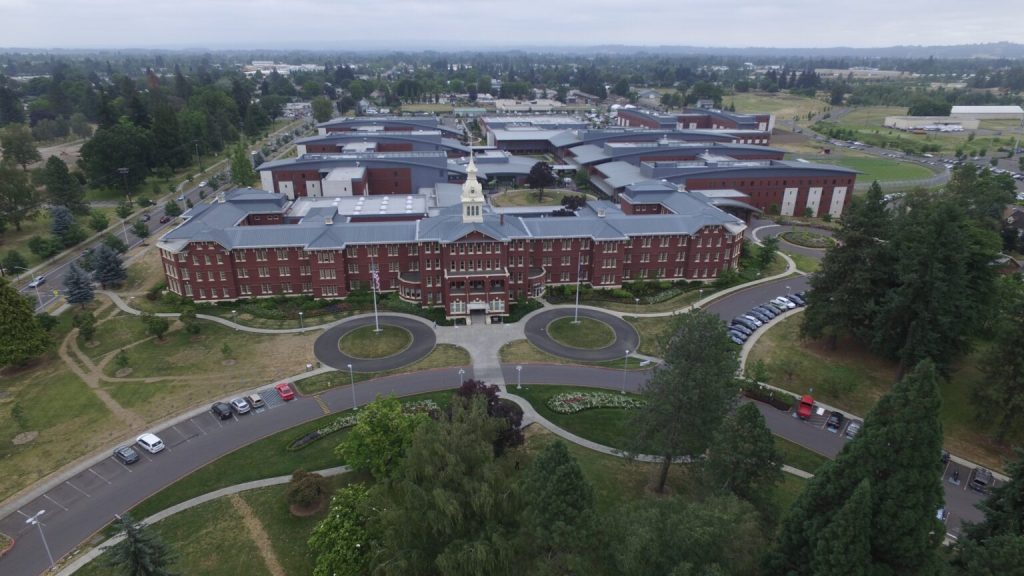Oregon’s mental health needs outweigh its ability to provide services, report shows
Published 6:29 am Friday, May 9, 2025

- The Oregon Health Authority oversees the Oregon State Hospital in Salem. (Courtesy Oregon Health Authority)
Limited data collection, inadequate funding are key barriers to Oregon’s behavioral health improvement efforts
This story discusses suicide. If you or someone you know may be experiencing a mental health crisis, contact the 988 Suicide & Crisis Lifeline by calling or texting “988” or chatting online at http://988lifeline.org/.
Oregon’s high behavioral health needs outpace the state’s availability to provide services, according to an audit report from the Secretary of State’s Office.
The state’s suicide rate has consistently outpaced the nation since 2000, and it ranks 46th among states for adults with substance use disorders who needed but did not receive treatment, according to the report.
And Oregon’s behavioral crisis response systems only partially meet the national guidelines and best practices, according to the state’s audit. The report, released Thursday, included recommendations for the Oregon Health Authority, as improving behavioral health systems in Oregon can provide health and economic benefits in the long run. For every $1 invested in preventing and treating youth mental disorders and suicide, there is a $24 return in health and economic benefits over 80 years, the report shows.
“We have a behavioral health crisis in our state and too many people are suffering,” Secretary of State Tobias Read said in a press release. “By implementing these recommendations and treating this issue with the urgency it deserves, Oregon should deliver better services that keep more people healthy, housed and alive.”
Limited data collection makes it difficult to understand need for services
The Oregon Health Authority lacks sufficient data to understand the need for behavioral health crisis services, according to the report.
The agency has not fully kept track of the number of calls made to the 988 mental health hotline and county crisis hotlines. It began collecting data from 988 callers in 2022, but county crisis lines still do not collect this data. The agency also has no way of tracking a caller’s demographic information, such as age, race and ethnicity, gender and county.
Suicide rate disparities are stark between different demographics. Native American individuals and non-Hispanic whites had the highest rates of suicide in comparison to other racial and ethnic groups, or about 20 deaths per 100,000. Rural Oregonians also had higher suicide rates than those living in urban areas.
“Without demographic data, the agency’s goal of eliminating health inequities by 2030 in the behavioral health crisis system is unlikely,” the report reads.
Inadequate funding an issue for two out of three of Oregon’s crisis systems
Since 2020, when 988 was designated as the national suicide prevention and mental health hotline, Oregon adopted the Crisis Now model, which has three pillars used to respond to behavioral crises across the state. These pillars are the 988 crisis hotline, mobile crisis teams and stabilization centers.
The audit found that only one of Oregon’s pillars — its crisis hotline — has sustainable funding. Oregon set aside this funding through a law implementing a $0.50 monthly fee for every cell phone and landline.
That fund also supports some of Oregon’s mobile crisis teams. The mobile teams can also receive Medicaid reimbursements.
However, there is no funding dedicated for Oregon’s three crisis stabilization centers, which is needed to support the continued operation of these centers.
Without sustainable funding support for crisis stabilization centers, many Oregonians end up in emergency departments or have to wait for a space to open at a center. This creates a backlog of patients waiting for the appropriate care, including those who may be placed on a hold awaiting civil commitment.
Oregon youth are experiencing more mental health challenges than adults
The report also highlights the need for behavioral health services for youth. In 2022, the state’s youth suicide rate was 14.2 per 100,000 compared to 10 per 100,000 nationally, with the highest rates occurring during ages 18 to 24 years of age.
And nearly every year from 2003 to 2022, Oregon’s youth suicide rate has been higher than the national rate, except for the year 2010.
According to the Substance Abuse and Mental Health Services Administration’s 2021-2022 National Surveys on drug use:
- 15% of Oregon youth and 7% of Oregon adults have serious thoughts of suicide.
- 7% of Oregon youth and 1.5% of Oregon adults have made any suicide plans.
- About 4.5% of Oregon youth and 0.7% of Oregon adults have attempted suicide.
Auditors offered 12 recommendations for the health authority, including recommendations to address its data collection gaps, addressing funding gaps and doing more strategic planning for the future. The health authority accepted all 12 recommendations.






